High Quality 6-Layer PCB
South-Electronic
Go with South-Electronic for the best quality, reliability, and value in your PCB needs. See the difference with our all-in-one 6 layer PCB service – from start to finish, we promise precision, durability, and compliance with the toughest industry standards.
Why Choose South-Electronic?
At South-Electronic, we get it. We know how important it is to have the right solutions for your 6 Layer PCB projects. We’re the best in the business when it comes to PCB innovation, and we can customize and get the accuracy you need to make your project a success. We’re all about giving you the best technology and solutions to make sure you’re successful.
-
Flexibility in Ordering
Make ordering what you need effortless.
Whether you require a single PCB or a large batch, with no strict minimum order quantities, you can start from just 1 piece. This gives you the flexibility to experiment, prototype, or scale production based on your own conditions. -
Experienced Team
You’ll benefit from the expertise of an experienced team.
With years of hands-on experience, our team understands your challenges and is ready to provide solutions that align with your vision. From design recommendations to manufacturing insights, we are here to assist you at every step. This level of expertise ensures you get the best results on time and within budget. -
Strict Quality Control
You deserve the best products, and that's exactly what we deliver.
Every 6-layer PCB produced by South-Electronic undergoes strict quality checks to ensure it meets your exact standards. With top certifications such as UL, CE, IATF16949, and ISO13485, you can rest assured that your products are manufactured to the highest global standards. We are committed to exceeding your expectations for performance and reliability with every board we produce. -
Comprehensive Service
You’ll gain a full-service partner.
Our extensive range of advanced processing equipment allows us to handle every stage of production, so you never have to worry about outsourcing to multiple vendors. Whether it's complex multi-layer boards or rapid prototyping, we have the tools and expertise to ensure every aspect of your project is handled smoothly and efficiently. -
Fast Delivery
You’ll gain a full-service partner.
Our extensive range of advanced processing equipment allows us to handle every stage of production, so you never have to worry about outsourcing to multiple vendors. Whether it's complex multi-layer boards or rapid prototyping, we have the tools and expertise to ensure every aspect of your project is handled smoothly and efficiently. -
Guaranteed Satisfaction
Your satisfaction is at the heart of everything we do.
As an ISO9001 certified factory, South-Electronic is dedicated to providing high-quality products with clear and proactive communication. We ensure every order meets your standards and keep you informed throughout the process. This commitment to quality and service means you can trust us to deliver exactly what you need, every time.
Related Project We had Done
Customer Reviews
Common Questions
Most Popular Questions
Send us a message
The more detailed you fill out, the faster we can move to the next step.
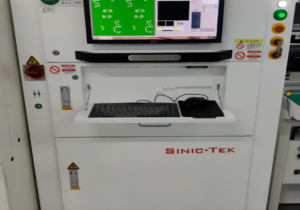
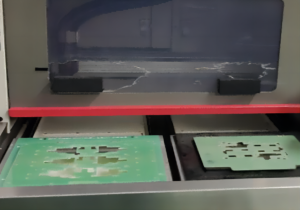
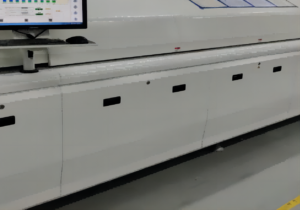
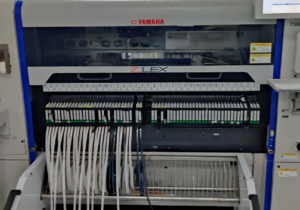
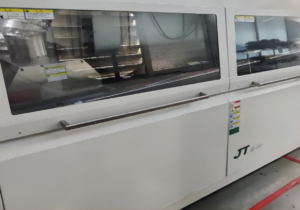
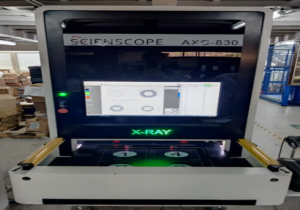

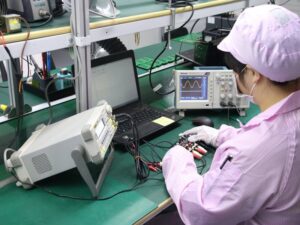

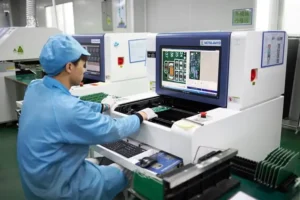



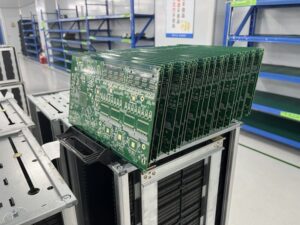

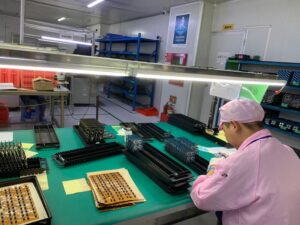
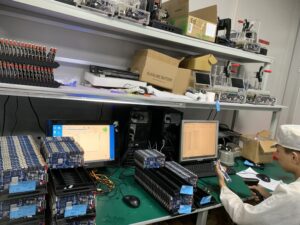


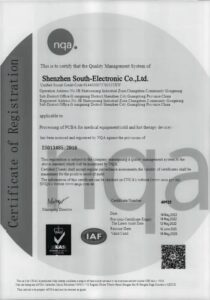
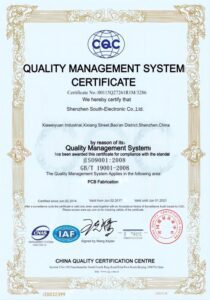
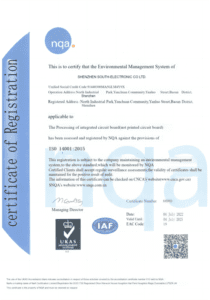








The Complete Guide For 6-Layer PCB
Contents
Chapter 1

Introduction to 6-Layer PCB
A 6-layer PCB (Printed Circuit Board) is a type of board that has six layers of copper and insulating materials. These boards are used in more complex electronic devices that need to do more things, have better signals, and work better. The extra layers let the signals and power move around better, so they are good for new things where you need to save space, go fast, and use less power.
Today, 6-layer PCBs are used in a lot of different things. They are in phones, computers, medical stuff, and cars. They are good for things that need to be small, do a lot of things, and go fast. They can handle high-frequency signals and stop other signals from getting in the way, so they are good for things that need to be really good at doing things.
Chapter 2
Why Use a 6-Layer PCB?
There are several reasons why you might choose to use a 6-layer PCB, including:
- Improved Signal Integrity: With more layers dedicated to power and ground planes, a 6-layer PCB helps minimize signal interference and ensure stable signal transmission. This is especially important in devices that use high-frequency signals, as it reduces signal degradation and cross-talk between layers. The additional layers also allow for better control over impedance, which is important for maintaining consistent signal quality in high-speed circuits.
- Better Noise Reduction: A 6-layer PCB helps reduce electromagnetic interference (EMI) and radio frequency interference (RFI) by providing extra ground layers that act as shields between signal layers. This shielding effect reduces the risk of noise and unwanted interference affecting the performance of the board. By improving noise reduction, 6-layer PCBs contribute to more reliable and stable operation, particularly in sensitive applications like medical devices and communications systems.
- Improved Heat Dissipation and Durability: As electronic components become more powerful, managing heat dissipation is critical to ensuring longevity and performance. The 6-layer design offers enhanced thermal management by spreading heat across multiple layers, allowing for better heat distribution throughout the PCB. This helps prevent hotspots, which can damage components or reduce their lifespan. Additionally, the thicker, multi-layer structure of 6-layer PCBs improves the board’s mechanical strength, making it more durable and resistant to physical stress.
- Support for High-Speed Applications: Many modern electronics require high-speed signal processing and data transfer, especially in industries such as telecommunications, computing, and automotive electronics. 6-layer PCBs are well-suited for high-speed applications because they can maintain signal integrity and reduce noise. The additional layers provide better separation between signal paths, reducing cross-talk and ensuring that high-speed signals are transmitted accurately. This makes 6-layer PCBs an excellent choice for devices like smartphones, data storage systems, and advanced automotive controls, where speed and reliability are paramount.
In summary, a 6-layer PCB offers significant benefits for advanced electronic devices, enhancing performance, reliability, and durability. These advantages make it a preferred choice for engineers and manufacturers working on high-performance, high-frequency applications.

Chapter 3
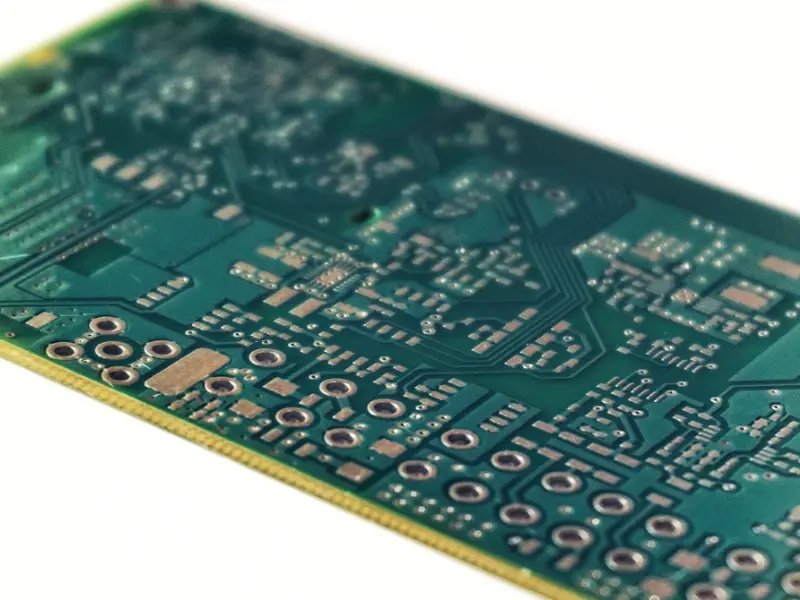
How 6-Layer PCBs Are Constructed?
Building a 6-layer PCB is a careful process that requires planning and execution to ensure performance. It starts with defining the layer stack-up, choosing materials, and determining the type of vias needed to connect the layers. Let’s look at each of these aspects:
1. Layer Stack-Up
The layer stack-up of a 6-layer PCB is the arrangement of conductive copper layers and insulating material layers that make up the board. A typical 6-layer stack-up has two internal signal layers, two power planes (one for power and one for ground), and two outer layers for signal routing. The most common configurations are:
- Signal 1 / Ground / Signal 2 / Power / Ground / Signal 3
- Signal 1 / Ground / Power / Signal 2 / Ground / Signal 3
These configurations shield the signal layers with ground and power layers to reduce electromagnetic interference (EMI). The power layers distribute power and reduce noise. This approach helps control impedance and improve signal integrity for high-speed and high-frequency applications.
2. Material Selection
The materials used in a 6-layer PCB affect performance, durability, and cost. The most common material is FR4, a fiberglass-reinforced epoxy laminate that balances electrical insulation, thermal stability, and cost. For high-performance or high-temperature applications, materials with higher glass transition temperatures (Tg) may be necessary.
- Standard FR4: For general-purpose PCBs with moderate performance requirements. Tg is around 130°C.
- High-Tg FR4: For applications that need better thermal resistance. High-Tg materials (Tg of 170°C or higher) are more stable at higher temperatures, making them good for high-power or high-frequency circuits.
- Rogers or Polyimide: For specialized applications like RF and microwave circuits that need better electrical properties.
Choosing the right material ensures the board can handle thermal loads, maintain signal integrity, and be reliable.
3. Via Types
Vias are holes that connect different layers in a PCB. In a 6-layer PCB, there are different types of vias depending on the design:
- Through-Hole Vias: These vias go through the entire PCB. They are the most common type and connect all layers in simpler designs. However, they take up space on inner layers, which can limit routing options in complex PCBs.
- Blind Vias: These vias connect outer layers to one or more inner layers but don’t go through the board. They are useful for high-density designs where space is limited, allowing more routing options without taking up space on internal layers.
- Buried Vias: These vias are entirely within the inner layers and don’t reach the outer layers. They are used in multi-layer boards to connect specific internal layers without affecting the surface layers. Buried vias maximize surface area for routing on the top and bottom layers.
The type of via depends on the design complexity, available space, and the need to optimize routing while minimizing interference and signal loss.
Chapter 4
Design Considerations for 6-Layer PCB
Designing a 6-layer PCB requires careful planning and consideration of various factors that impact its performance, reliability, and manufacturability. The key aspects of 6-layer PCB design include the optimal arrangement of layers, proper trace width and spacing, and controlling impedance to maintain signal integrity. Here’s a detailed breakdown of these design considerations:
1. Optimal Layer Arrangement for Signal Routing and Power Planes
The stack-up and arrangement of layers in a 6-layer PCB play a critical role in the board’s overall performance. The goal is to balance the signal layers and power planes to ensure efficient routing, reduce noise, and enhance signal integrity. A typical 6-layer PCB consists of three pairs of layers: two signal layers, one power plane, one ground plane, and additional signal or ground layers. Here’s a common and effective layer stack-up:
- Top Signal Layer (Signal 1)
- Ground Plane (GND)
- Inner Signal Layer (Signal 2)
- Power Plane (VCC)
- Inner Signal Layer (Signal 3)
- Bottom Signal Layer (Signal 4)
In this arrangement, the ground plane is placed adjacent to the top signal layer, and the power plane is near the second inner signal layer. This structure reduces electromagnetic interference (EMI) and allows for better signal shielding. The combination of power and ground planes also provides decoupling for the signal layers, minimizing cross-talk and noise between the layers.
Designers should also consider placing high-speed signals on the inner layers to reduce radiation and interference. Additionally, separating the power and ground planes across different layers improves the overall power distribution and minimizes voltage fluctuations.
2. Trace Width and Spacing Guidelines:
The width of the PCB traces and the spacing between them are essential design considerations that affect the board’s ability to handle current and maintain signal integrity. The trace width is typically determined based on the current-carrying capacity required for the circuit, as well as thermal and manufacturability constraints. Wider traces are needed to carry higher currents, while narrower traces are used for signals that require precise control, such as high-speed data lines.
For high-speed or high-frequency applications, the spacing between traces is just as important as the trace width. Tight spacing between traces can lead to coupling and signal interference, so it is crucial to follow the appropriate design rules to prevent cross-talk. A general guideline for trace spacing is to maintain a gap that is at least as wide as the trace itself, though this varies based on the design.
The IPC-2221 standard provides guidelines for trace width and spacing based on the board’s intended use. For example, a 1 oz copper trace carrying 1 amp of current typically requires a width of 0.015 inches (15 mils). However, for high-density designs with limited space, designers may need to optimize both trace width and spacing carefully.
3. Impedance Control and Signal Integrity Tips:
Impedance control is a critical factor in 6-layer PCBs, especially for high-speed and high-frequency designs. When signals travel through the PCB traces, the impedance of those traces can affect the signal quality. If the impedance is not controlled, it can lead to signal reflection, degradation, and distortion, which can negatively impact the performance of the circuit.
To maintain proper impedance, PCB designers must take into account the trace width, the spacing between the trace and its reference plane (usually a ground or power plane), and the dielectric constant of the board material (e.g., FR4). Controlled impedance is achieved by carefully adjusting these parameters to meet the required specifications for high-speed signals. For example, a 50-ohm impedance is often the target for single-ended signals, while differential pairs (used for high-speed data transmission) typically require 100-ohm impedance.
Here are some key tips for maintaining signal integrity in 6-layer PCB designs:
- Keep signal traces short and direct: The longer a trace, the greater the chance of signal degradation. Keep high-speed signal paths as short as possible.
- Use ground planes for shielding: Place sensitive or high-speed signals near ground planes to minimize EMI and noise. This shielding effect helps maintain clean signals.
- Maintain consistent trace geometry: To avoid impedance mismatches, ensure that trace width, spacing, and layer transitions remain consistent throughout the signal path.
- Use differential pairs where necessary: For high-speed digital signals or RF designs, differential pair routing (with controlled impedance) helps reduce noise and improve signal integrity.
- Via Design: Another aspect of impedance control is via design. Vias can introduce discontinuities in the signal path, potentially causing reflections. Using fewer vias and maintaining a controlled via transition can help preserve signal integrity. Blind and buried vias can also be used to reduce signal path length and minimize signal degradation in multi-layer designs.
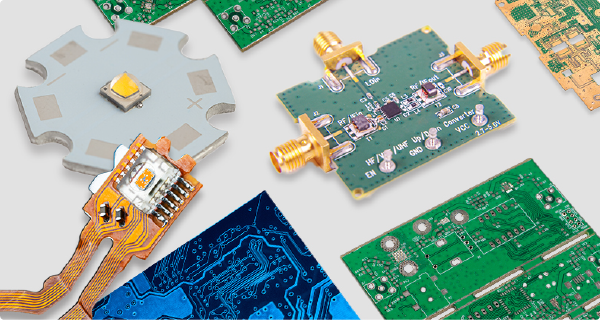
Chapter 5

6-Layer PCB Manufacturing Process
Making a 6-layer PCB is a complex and highly controlled process that involves several critical steps, each requiring precision and attention to detail to ensure the final product meets the required specifications. This section will provide an overview of the key fabrication steps, testing and inspection methods, and quality control measures that ensure the highest standards of performance and reliability in 6-layer PCBs.
Overview of Fabrication Steps:
Material Preparation and Layer Lamination:
- The manufacturing process begins with selecting the core material, typically FR4 or other high Tg materials, which will serve as the foundation of the PCB. Prepreg (a material made of fiberglass impregnated with resin) is used to bind the copper layers together.
- For a 6-layer PCB, copper-clad laminates are stacked in a specific order to form the board’s internal structure. This includes alternating layers of copper foil and insulating material. The stack-up design is vital for signal integrity, power distribution, and heat management.
- The layers are laminated together under high heat and pressure, causing the prepreg to melt and bind the layers, forming a solid, cohesive board. This process, known as pressing, is one of the most critical steps in multilayer PCB fabrication as it determines the alignment and bonding of the layers.
Drilling:
- Once the layers are laminated, holes, or vias, are drilled into the board. These vias allow for electrical connections between the different layers of the PCB.
- Through-hole vias, blind vias, and buried vias may all be used in a 6-layer PCB depending on the design. These holes are drilled using precision CNC machines, ensuring accuracy and alignment with the circuit patterns.
Plating and Electroless Copper Deposition:
- After drilling, the inner walls of the vias are plated with copper to establish an electrical connection between layers. This is done through a process called electroless copper deposition, where a thin layer of copper is chemically deposited onto the surface of the drilled holes.
- Following this, an electroplating process thickens the copper coating, making the vias conductive and ready for signal transmission.
Imaging and Etching:
- In this step, a layer of photoresist (a light-sensitive material) is applied to the outer layers of the PCB. The photoresist is exposed to UV light using a mask that defines the circuit patterns.
- Once exposed, the PCB undergoes a developing process, which removes the unexposed photoresist, leaving only the desired copper traces.
- Next, the board is passed through a chemical etching process, where the unwanted copper is removed, leaving the defined circuit paths. This step is crucial for creating the electrical pathways that connect the components on the PCB.
Solder Mask and Surface Finish:
- After etching, a solder mask is applied to the surface of the PCB to protect the copper traces and prevent short circuits. The solder mask covers all areas of the board except for the component pads, where solder will be applied.
- A variety of surface finishes can be applied, such as HASL (Hot Air Solder Leveling), ENIG (Electroless Nickel Immersion Gold), or OSP (Organic Solderability Preservatives). These finishes protect the exposed copper pads and ensure good solderability during the assembly process.
Silkscreen Printing:
- In this step, identifying marks such as component labels, part numbers, and company logos are printed onto the PCB using a silkscreen process. This helps in the assembly and troubleshooting of the board.
Final Profiling and Cutting:
- The PCB is then cut into its final shape using CNC routers or laser cutting machines. If multiple boards are produced on a single panel, they are separated at this stage.
Testing and Inspection Methods:
Automated Optical Inspection (AOI):
- AOI is used to visually inspect the PCB for defects such as misalignments, missing traces, or incorrect patterns. Cameras capture high-resolution images of the board, and the system automatically compares them to the design files to detect any deviations.
- AOI is particularly effective for checking the integrity of the etching process and ensuring that all traces are correctly formed.
X-ray Inspection:
- X-ray inspection is used to check the internal layers and connections, particularly the vias, for defects that cannot be seen with the naked eye. This method is essential for multilayer PCBs, as defects within the buried or blind vias can significantly affect the board’s performance.
- X-ray inspection also helps detect potential issues in the solder joints during the assembly phase.
Electrical Testing:
- Electrical testing is conducted to ensure that all circuits on the PCB are properly connected and free from short circuits or open circuits. Flying probe testers or bed-of-nails testers are commonly used for this purpose.
- Electrical testing verifies the continuity of traces and the functionality of the PCB before it proceeds to the assembly stage.
Quality Control Measures:
Certification Compliance:
- South-Electronic ensures that all 6-layer PCBs meet industry standards and certifications, such as ISO9001, UL, CE, IATF16949, and ISO13485. These certifications guarantee that the PCBs are manufactured to the highest quality and safety standards.
In-Process Inspections:
- Throughout the manufacturing process, in-process inspections are conducted to detect defects early and prevent costly rework later. These inspections include checking the alignment of layers, the quality of drilled vias, and the accuracy of copper deposition.
Final Quality Assurance (QA):
- Before shipping, the finished PCBs undergo a final round of inspections and testing to ensure they meet all design specifications and quality standards. Any defects or issues found during this stage are corrected before the boards are packaged for delivery.
- The final QA ensures that customers receive fully functional, high-quality PCBs that perform reliably in their intended applications.
Chapter 6
Common Challenges in 6-Layer PCB Design
Designing a 6-layer PCB comes with its own set of challenges, especially when dealing with high-speed signals, managing signal crosstalk, and ensuring effective thermal management in densely packed designs. These challenges require careful attention to layout, material selection, and proper design techniques to maintain optimal performance. Let’s explore the most common design challenges and how to address them.
1. Managing Signal Crosstalk:
Signal crosstalk occurs when signals from one trace interfere with the signals on a nearby trace, causing unwanted noise or distortion. This problem becomes more pronounced in multi-layer boards, where the density of traces is higher, and high-frequency signals are more susceptible to interference. In 6-layer PCBs, managing crosstalk is critical, particularly for designs involving high-speed data transmission, RF communication, or sensitive analog signals.
To manage signal crosstalk effectively, designers can implement the following strategies:
Optimize Layer Stack-Up: In a 6-layer PCB, the arrangement of signal and ground planes plays a key role in reducing crosstalk. By placing ground planes adjacent to high-speed signal layers, you create a shielding effect that minimizes interference. For example, in a typical stack-up, alternating ground and power planes between signal layers helps confine the electromagnetic fields generated by signals, reducing their impact on neighboring traces.
Increase Trace Spacing: Keeping sufficient spacing between traces is another effective way to minimize crosstalk. As a general rule, the distance between two signal traces should be at least three times the width of the trace. This reduces the electromagnetic coupling between adjacent traces, lowering the risk of interference.
Use Ground Guard Traces: For highly sensitive signals, designers may include ground guard traces between critical signal lines. These grounded traces act as barriers, absorbing and dissipating interference before it can affect nearby signals. This technique is particularly useful in mixed-signal designs where analog and digital signals share the same board.
By carefully managing signal routing and using ground planes effectively, designers can significantly reduce crosstalk and ensure clean signal transmission in 6-layer PCBs.
2. Handling High-Speed Signals:
High-speed signals present a unique set of challenges in 6-layer PCB designs. As signal frequencies increase, factors such as impedance control, signal reflections, and transmission line effects become more critical. Without proper design considerations, high-speed signals can degrade or distort, leading to unreliable performance in the final product.
Here are several key strategies for handling high-speed signals in 6-layer PCBs:
Impedance Control: High-speed signals are particularly sensitive to impedance mismatches along their transmission paths. Variations in impedance can cause signal reflections, resulting in data loss or corruption. To maintain signal integrity, it’s essential to design controlled-impedance traces by carefully adjusting trace width, spacing, and the distance between the trace and its reference plane (ground or power). Impedance control ensures that signals travel smoothly with minimal reflection, preserving their integrity.
Use of Differential Pairs: For very high-speed signals, such as those found in USB, HDMI, or Ethernet applications, using differential pairs is a common practice. Differential pairs consist of two traces carrying equal and opposite signals. These signals are immune to common-mode noise, making them ideal for reducing EMI and maintaining signal fidelity over long distances. Care must be taken to maintain equal trace lengths (known as skew control) and consistent spacing between the pairs to prevent signal degradation.
Minimize Via Transitions: Vias are essential for routing signals between layers, but they can introduce signal reflections and loss, especially at high frequencies. Minimizing the number of via transitions in high-speed signal paths reduces the risk of signal degradation. In some cases, using blind vias or buried vias can help achieve optimal routing without unnecessary signal transitions between layers.
By following these guidelines, designers can handle high-speed signals more effectively, ensuring that their 6-layer PCB performs reliably in demanding applications.
3. Thermal Management in Dense Designs:
Thermal management is one of the most critical challenges in multi-layer PCB designs, especially as devices become more powerful and components are packed densely onto the board. Heat generated by components such as processors, power regulators, and other high-power devices must be effectively dissipated to prevent overheating, which can lead to reduced performance, failure, or a shortened lifespan for the PCB.
Here are several strategies for managing thermal issues in dense 6-layer PCB designs:
Use of Thermal Vias: Thermal vias are small holes drilled through the PCB, allowing heat to pass from one layer to another. These vias are typically placed around high-heat components and connected to internal or external copper planes that act as heat sinks. By providing a direct thermal path between hot components and cooler areas of the board, thermal vias improve heat dissipation across the entire PCB.
Copper Planes for Heat Dissipation: In 6-layer PCBs, the use of copper planes is not limited to electrical performance; they can also serve as effective heat sinks. By increasing the thickness of the copper planes, especially those on the inner layers, the PCB can more efficiently conduct heat away from critical components. For designs with high-power requirements, using thicker copper (such as 2 oz or 3 oz copper layers) can significantly improve the board’s ability to handle heat.
Component Placement and Spacing: Proper component placement and spacing are crucial for effective thermal management. High-power components should be spaced out to prevent heat buildup in specific areas, and care should be taken to place heat-sensitive components away from heat-generating ones. Additionally, placing components with high thermal demands near the edges of the board can help with heat dissipation, as these areas are generally cooler than the center.
Thermal Management Materials: In some cases, designers may opt to use specialized thermal management materials, such as thermal interface materials (TIMs), heat sinks, or even heat pipes, to enhance the board’s cooling capability. These materials help transfer heat away from critical components and dissipate it more effectively into the environment.
By integrating these thermal management techniques into the design process, engineers can ensure that even densely packed 6-layer PCBs maintain optimal performance and reliability without suffering from overheating.
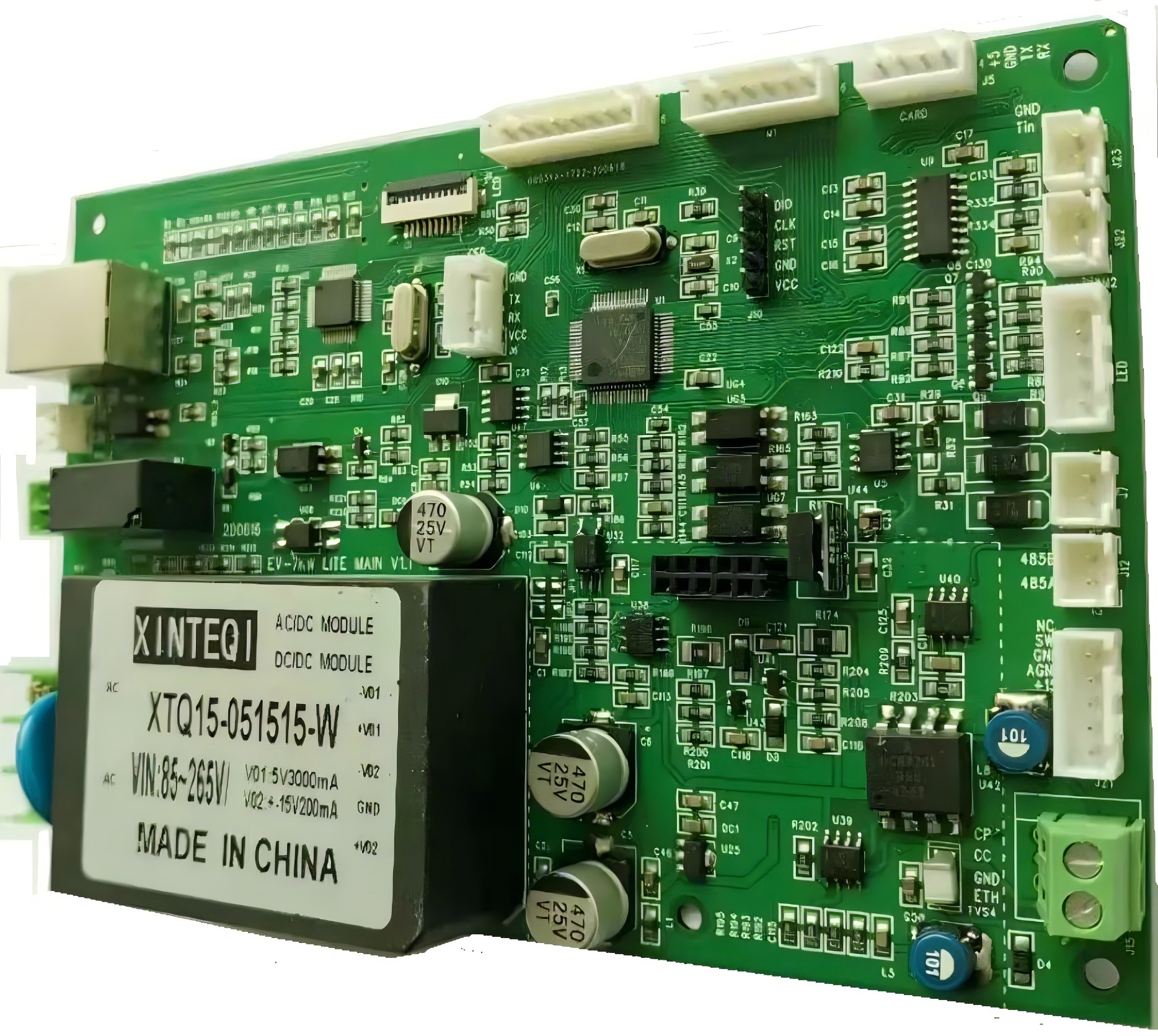
Chapter 7
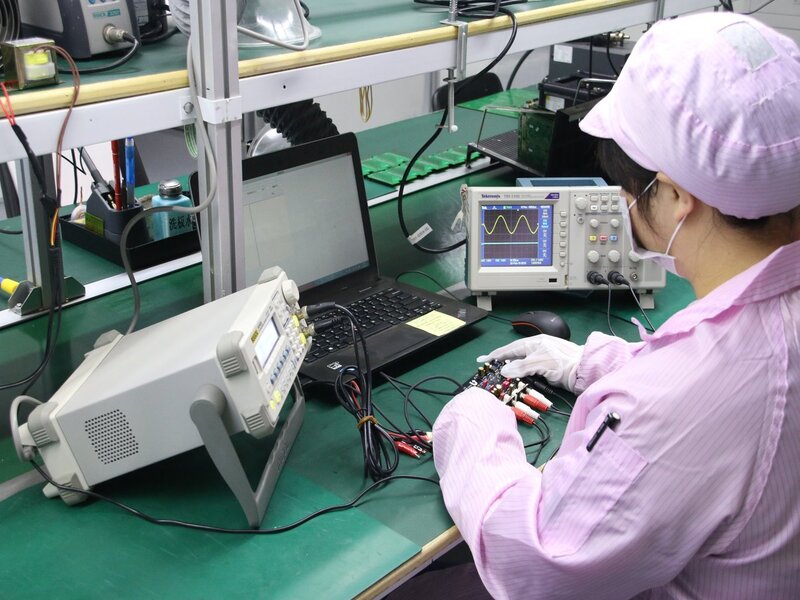
Material Choices for 6-Layer PCB
Picking the right materials for a 6-layer PCB is important because it affects how the board performs, how long it lasts, and how much it costs. Different applications need different substrate materials based on their electrical properties, thermal stability, and mechanical strength. You need to know about these material options so you can design your board to perform the way you want it to and still stay within your budget. In this section, I’ll tell you about the most common substrate materials for 6-layer PCBs, how these materials affect performance and cost, and how to pick the best material for your application.
1. Differences in Substrate Materials
The substrate material of a PCB is the insulating layer that separates and supports the conductive copper layers. The most common materials for 6-layer PCBs include FR4, high-Tg FR4, and polyimide, though other advanced materials may be used for specific applications.
FR4 (Flame Retardant 4):
FR4 is the industry-standard material for most PCBs, including 6-layer designs. It is a fiberglass-reinforced epoxy laminate with good electrical insulation, thermal stability, and mechanical strength. FR4 offers a good balance between cost and performance, making it the go-to choice for a wide range of applications, from consumer electronics to industrial equipment.- Advantages: FR4 is cost-effective, widely available, and suitable for most general-purpose PCBs. It can handle moderate thermal and electrical loads.
- Disadvantages: FR4 has limitations in high-temperature environments or in applications that require higher signal frequencies, where it may exhibit higher dielectric losses and lower thermal resistance.
High-Tg FR4:
High-Tg (glass transition temperature) FR4 is a modified version of standard FR4 that can withstand higher temperatures without degrading. The Tg value refers to the temperature at which the material transitions from a rigid state to a softer, more flexible one. High-Tg materials typically have a Tg of 170°C or higher, making them ideal for applications with elevated thermal demands, such as power electronics or automotive systems.- Advantages: High-Tg FR4 provides improved thermal stability and reliability in high-temperature or high-power environments. It reduces the risk of delamination and mechanical stress under thermal cycling.
- Disadvantages: While it offers better heat resistance, high-Tg FR4 is more expensive than standard FR4.
Polyimide:
Polyimide is a high-performance substrate material known for its excellent thermal stability and flexibility. It can operate in extremely high-temperature environments, up to 260°C, making it ideal for demanding applications such as aerospace, military, and medical devices. Polyimide also has excellent dielectric properties, making it suitable for high-frequency signal transmission.- Advantages: Polyimide is highly durable, offers superior performance at high temperatures, and provides exceptional mechanical flexibility, which is crucial for flex PCBs or flexible circuits.
- Disadvantages: Polyimide is significantly more expensive than FR4, and its rigidity may not be necessary for applications that do not require extreme thermal or mechanical performance.
Rogers Laminates (or other High-Frequency Materials):
For RF (radio frequency) and microwave applications, materials like Rogers laminates are often used instead of FR4. These materials offer lower dielectric loss and better electrical performance at high frequencies, making them suitable for communication devices, radar systems, and other high-frequency electronics.- Advantages: Rogers materials provide excellent electrical properties, low signal loss, and minimal dielectric constant variations at high frequencies.
- Disadvantages: These materials are typically much more expensive than FR4, making them cost-prohibitive for standard applications.
2.How Material Impacts Performance and Cost
The choice of substrate material for your 6-layer PCB can have a significant impact on both its performance and cost. Below are the key performance factors influenced by material selection:
Thermal Performance:
The ability of a PCB to dissipate heat is largely determined by the thermal conductivity of the substrate material. In high-power or high-temperature applications, materials with higher thermal stability, such as high-Tg FR4 or polyimide, are preferred. They prevent issues like delamination, warping, and reduced mechanical strength, which can occur with standard FR4 under thermal stress.Electrical Performance:
The electrical properties of the substrate, particularly the dielectric constant (Dk) and the dissipation factor (Df), affect how signals are transmitted through the PCB. Materials with a lower Dk and Df, such as Rogers laminates or polyimide, are ideal for high-frequency or high-speed digital designs, as they reduce signal loss and maintain signal integrity over longer distances.- Dielectric Constant (Dk): A lower Dk value helps reduce signal propagation delays, which is critical for high-speed and RF designs.
- Dissipation Factor (Df): A low Df reduces signal attenuation, ensuring higher fidelity in signal transmission, especially for long traces.
Mechanical Strength and Flexibility:
The mechanical properties of the substrate, such as its flexibility and rigidity, also play a role in determining the durability of the PCB. Polyimide, for instance, is used in flexible and rigid-flex PCBs, which require bending without breaking. For applications that require mechanical flexibility (e.g., wearables, medical devices), polyimide is often the material of choice.Environmental Factors:
Certain environments, such as those involving high humidity, chemical exposure, or extreme temperatures, may require materials with specific resistance characteristics. For example, polyimide offers excellent chemical resistance and is less affected by moisture than standard FR4, making it suitable for harsh environments.
Choosing the Right Material for Your Application
Selecting the appropriate material for your 6-layer PCB depends on the specific requirements of your project. Consider the following factors to choose the best material for your application:
Operating Temperature:
If your design will be exposed to high temperatures or extreme temperature fluctuations, consider using high-Tg FR4 or polyimide. These materials will maintain their mechanical and electrical properties under thermal stress, ensuring the longevity of your PCB.Signal Frequency:
For high-frequency or RF applications, materials like Rogers laminates or low-loss laminates are recommended due to their superior electrical properties, such as low Dk and low Df. These materials help preserve signal integrity and minimize loss, which is essential for communication devices and high-speed circuits.Cost Considerations:
If cost is a key factor, FR4 is often the most economical choice for general-purpose PCBs. However, for applications requiring better thermal or electrical performance, the added cost of high-Tg FR4 or polyimide may be justified by improved reliability and performance. Balancing cost with performance needs is critical when selecting the material.Environmental and Mechanical Requirements:
If your PCB will be used in a harsh environment (e.g., high humidity, chemical exposure) or if the design requires flexibility, polyimide or other specialized materials should be considered. For standard applications, FR4 will generally suffice unless the operating conditions demand more robust material properties.Design Complexity and Layer Count:
In highly complex, high-density designs with multiple layers, the choice of material can affect manufacturability. For example, polyimide is commonly used in flexible PCBs, while high-Tg FR4 is more suitable for rigid, multi-layer PCBs that need to withstand high processing temperatures during assembly.
Chapter 8
Surface Finishes for 6-Layer PCB
Surface finishes play a critical role in 6-layer PCB manufacturing by protecting the exposed copper pads from oxidation and contamination while enhancing solderability during the assembly process. Choosing the right finish is essential to ensure long-term reliability and optimal performance of the board. In this section, we’ll explore the most common types of surface finishes, how they impact solderability and reliability, and how to select the best finish for your application.
1. Types of Surface Finishes
Several surface finishes are commonly used in the PCB industry, each with its own advantages and limitations. The right finish depends on factors such as assembly method, environmental conditions, and cost considerations. Here are the most popular options:
HASL (Hot Air Solder Leveling): HASL is one of the most widely used surface finishes in the PCB industry due to its affordability and ease of application. In the HASL process, the PCB is dipped into molten solder (a mixture of tin and lead, or lead-free solder in RoHS-compliant boards). After the dip, hot air is blown across the surface to remove excess solder, leaving a uniform layer on the exposed pads.
- Advantages: Cost-effective, provides good solderability, and offers a long shelf life.
- Disadvantages: The uneven surface created by the solder coating can be problematic for fine-pitch components and advanced designs, making it less suitable for high-density PCBs.
- Applications: Suitable for general-purpose and through-hole assembly, as well as less complex SMT designs.
ENIG (Electroless Nickel Immersion Gold): ENIG is a popular surface finish for high-reliability and complex PCBs. It involves depositing a layer of electroless nickel on the copper pads, followed by a thin layer of immersion gold. The nickel acts as a barrier between the copper and the gold, while the gold protects the nickel and enhances solderability.
- Advantages: ENIG provides a flat, smooth surface, making it ideal for fine-pitch components and high-density designs. It also offers excellent corrosion resistance and long-term reliability. The finish is compatible with both leaded and lead-free soldering processes.
- Disadvantages: ENIG is more expensive than HASL and other finishes. There is also a potential risk of “black pad” defects (an issue caused by excessive nickel corrosion), which can affect solderability if the process is not tightly controlled.
- Applications: Preferred for high-density PCBs, BGA packages, and applications requiring excellent surface flatness, such as HDI (High-Density Interconnect) and RF circuits.
OSP (Organic Solderability Preservative): OSP is a surface finish where a thin, organic coating is applied to the copper pads to protect them from oxidation. This coating preserves the copper’s solderability but dissolves during the soldering process, leaving a clean copper surface.
- Advantages: OSP is environmentally friendly and cost-effective, with excellent solderability for both leaded and lead-free processes. It is also suitable for fine-pitch components and offers a flat surface, making it compatible with high-density designs.
- Disadvantages: OSP has a limited shelf life compared to other finishes, as the organic coating can degrade over time, especially in humid environments. It is also less durable during multiple reflow cycles, which can be an issue in complex assembly processes.
- Applications: Commonly used in consumer electronics, high-volume production, and applications with minimal rework requirements.
Immersion Silver: Immersion silver is another finish option where a thin layer of silver is deposited onto the copper pads. This finish offers good solderability and conductivity while providing protection against oxidation.
- Advantages: Immersion silver provides a flat surface and excellent electrical performance, making it suitable for high-frequency and high-speed circuits. It also supports both leaded and lead-free soldering processes.
- Disadvantages: Silver can tarnish over time when exposed to air or humidity, potentially impacting solderability. Additional precautions, such as anti-tarnish coatings, may be needed to prevent oxidation.
- Applications: Often used in RF, microwave, and automotive applications where high conductivity and signal integrity are required.
Immersion Tin: Immersion tin involves depositing a thin layer of tin directly onto the copper pads, providing good solderability and protection against oxidation. The tin layer dissolves during soldering, leaving a clean copper surface.
- Advantages: Immersion tin provides a flat, uniform surface and is more cost-effective than ENIG. It also supports fine-pitch components and high-density designs.
- Disadvantages: Like immersion silver, immersion tin is prone to oxidation over time, and it may not perform well in humid environments. Additionally, it has a limited shelf life and is less durable during multiple reflow cycles.
- Applications: Suitable for high-volume, cost-sensitive applications and high-speed designs.
2. How Surface Finishes Impact Solderability and Reliability?
The choice of surface finish has a direct impact on the PCB’s solderability and long-term reliability. Factors such as the flatness of the finish, resistance to oxidation, and compatibility with lead-free soldering processes all play a role in determining how well the finish performs in different applications.
Solderability:
The primary function of a surface finish is to preserve the copper pads’ solderability, ensuring that components can be soldered reliably during assembly. Finishes like ENIG and OSP offer excellent solderability, especially for fine-pitch components, due to their smooth and flat surfaces. HASL, on the other hand, can create uneven surfaces, which may lead to soldering issues in designs with tightly spaced components.Oxidation Resistance:
A surface finish needs to protect the exposed copper pads from oxidation, which can negatively affect solderability and electrical conductivity. ENIG and immersion silver provide excellent protection against oxidation, while OSP and immersion tin are more susceptible to degradation over time, especially in humid or harsh environments. This is why finishes like ENIG are preferred for applications that require long-term reliability.Durability in Reflow Processes:
During assembly, PCBs may undergo multiple reflow cycles to solder components. Some surface finishes, such as ENIG and HASL, can withstand multiple reflow cycles without compromising solderability. OSP, however, can degrade with each reflow cycle, making it less suitable for designs that require significant rework or multiple assembly passes.
3. Selecting the Best Finish for Your Needs
When selecting a surface finish for your 6-layer PCB, several factors must be considered, including the complexity of the design, the environment in which the PCB will operate, the expected production volume, and the budget. Here’s how to choose the right finish:
For Complex, High-Density Designs: If your design includes fine-pitch components, BGA packages, or HDI (High-Density Interconnect) features, a flat surface finish like ENIG or OSP is recommended. ENIG provides superior flatness and reliability, making it ideal for high-performance applications like telecommunications, medical devices, and advanced computing.
For Cost-Sensitive, High-Volume Production: If budget is a primary concern, especially in high-volume production runs, HASL or OSP may be the best choices. HASL is cost-effective and provides good solderability for general-purpose boards, while OSP offers a flat surface and is compatible with fine-pitch components at a lower cost than ENIG.
For High-Reliability, Long-Term Applications: In applications where long-term reliability is critical, such as automotive, aerospace, or industrial equipment, ENIG is often the preferred finish due to its excellent corrosion resistance and durability. Immersion silver is another option if signal integrity and high conductivity are priorities, especially for RF or high-speed applications.
For Environments with High Humidity or Exposure to Harsh Conditions: If your PCB will be exposed to humid or harsh environmental conditions, finishes like ENIG or immersion silver offer better protection against oxidation and corrosion. Avoid OSP or immersion tin in these scenarios, as they are more prone to degradation over time.
So, in the end, you gotta decide what kind of finish you want on your 6-layer PCB. Each finish has its own pros and cons. It affects how well you can solder stuff to it, how reliable it is, and how much it costs. If you know what each finish does and you know what you need for your application, you can make sure your PCB works good when you put it together and keeps working good for a long time.

Chapter 9

Cost Considerations
Manufacturing a 6-layer PCB involves several factors that can significantly impact the overall cost of production. Understanding these cost drivers is essential for making informed decisions about materials, complexity, and order volume while still meeting performance requirements. In this section, we will explore the key cost drivers in 6-layer PCB manufacturing, provide tips on balancing cost and performance, and offer practical cost-saving strategies.
1. Key Cost Drivers in 6-Layer PCB Manufacturing
Several factors influence the cost of producing a 6-layer PCB, from material selection to design complexity and order size. Let’s break down these cost drivers:
Materials: The choice of materials is one of the most significant factors affecting the cost of a 6-layer PCB. Different substrates and surface finishes come with varying price points based on their performance characteristics.
- Substrate Materials: Standard FR4 is the most commonly used and cost-effective material for general-purpose PCBs. However, if your design requires high-Tg FR4, polyimide, or Rogers laminates for high-frequency or high-temperature applications, the material costs can increase significantly.
- Copper Thickness: The thickness of the copper layers also affects the cost. While 1 oz copper (35 µm) is standard, increasing the copper weight for higher current-carrying capacity or improved heat dissipation (e.g., 2 oz or 3 oz) adds to the overall cost.
- Surface Finishes: Finishes like HASL are generally more affordable, while higher-end options like ENIG or immersion silver can raise the cost due to their superior performance and durability.
Complexity of the Design: The complexity of your PCB design directly impacts manufacturing costs. Factors that contribute to increased complexity include:
- Number of Layers: As the number of layers increases, so do the manufacturing steps and the cost. A 6-layer board will naturally be more expensive to produce than a 4-layer board due to the additional materials, lamination cycles, and drilling required.
- Fine Pitch Components and Dense Layouts: Designs with fine-pitch components, BGAs (Ball Grid Arrays), and densely packed traces require more precision in both manufacturing and inspection, increasing costs. Routing complexity, such as differential pairs for high-speed signals, also adds to the cost.
- Via Types: The use of advanced via technologies, such as blind or buried vias, increases manufacturing complexity and cost. These vias require additional drilling steps and precise alignment, which can make the process more expensive than standard through-hole vias.
Order Volume: The quantity of PCBs ordered has a direct impact on the price per unit. Typically, larger order volumes reduce the cost per board due to economies of scale. Here’s how order size affects costs:
- Prototype or Small Batch: When producing a small quantity or prototype, setup costs such as tooling, material preparation, and testing are spread over fewer units, resulting in higher cost per board.
- Large-Scale Production: In larger production runs, setup costs are amortized over more units, making each PCB significantly cheaper. Manufacturers may also offer bulk discounts for large orders.
2. How to Balance Cost and Performance
Finding the right balance between cost and performance is critical, especially when designing a 6-layer PCB that needs to meet specific technical requirements while staying within budget. Here are several strategies to achieve this balance:
Choose the Right Material for Your Application: Opting for standard FR4 is typically the most cost-effective choice, but if your application requires higher thermal or frequency performance, it’s important to invest in materials like high-Tg FR4 or polyimide where necessary. Avoid over-engineering your board with high-cost materials that exceed the requirements of your application.
Optimize the Layer Stack-Up: While a 6-layer board provides improved signal integrity and power distribution, the layer configuration can significantly affect cost. Ensure that your layer stack-up is optimized for the specific needs of your design. For example, avoid adding unnecessary layers that do not improve performance. Using effective power and ground plane placement can enhance signal quality without increasing the layer count.
Balance Copper Weight and Trace Design: Increasing copper thickness can improve current-carrying capacity and thermal performance, but it also raises material costs. Ensure that your design uses the appropriate copper weight for the current loads and thermal requirements of your application, without exceeding what is necessary. Additionally, trace width and spacing should be optimized to prevent excessive copper usage.
Simplify the Design Where Possible: Reducing complexity in your design, such as minimizing the number of blind and buried vias or avoiding overly complex routing patterns, can lower costs. If your application allows for through-hole vias instead of more expensive via options, this can result in significant savings.
3. Cost-Saving Tips for 6-Layer PCBs
There are several practical ways to reduce costs when manufacturing 6-layer PCBs without sacrificing the overall performance or quality of the board. Here are some cost-saving tips:
Use Standard Materials Whenever Possible: If your design does not require high-temperature or high-frequency performance, stick to standard FR4 material. This is the most affordable option and works well for a wide range of applications. Only opt for high-Tg or specialized materials when absolutely necessary for your project’s performance needs.
Select the Most Economical Surface Finish: For most general-purpose applications, HASL or OSP will be the most cost-effective surface finishes. ENIG or immersion silver should only be used if your design requires superior flatness, reliability, or corrosion resistance. Match the surface finish to the specific needs of your assembly process and environment to avoid unnecessary costs.
Minimize Via Types and Use Standard Drilling: Through-hole vias are the most affordable option and should be used whenever possible. Advanced via types, such as blind or buried vias, increase complexity and cost. Additionally, avoiding the use of microvias (used in HDI designs) can reduce costs if your design does not require them. Stick to standard via drilling practices unless your design absolutely demands more complex options.
Order in Larger Quantities: If possible, order PCBs in larger batches to take advantage of bulk discounts. Manufacturers often offer significantly lower per-unit costs when producing larger quantities due to reduced setup time and economies of scale.
Design for Manufacturability (DFM): Work closely with your PCB manufacturer to ensure that your design is optimized for their specific manufacturing processes. By considering DFM guidelines, you can reduce costs associated with manufacturing complexity, such as tight tolerances or unnecessary process steps. Simplifying your design can lead to more efficient production and lower overall costs.
Leverage Prototype Runs for Refinement: Start with a small prototype run to identify any design issues before moving to mass production. This allows you to make adjustments and optimizations early on, preventing costly errors in large production runs. Once your design is refined, ordering larger volumes will yield better pricing.
Chapter 10
Choosing the Right 6-Layer PCB Manufacturer
When evaluating PCB manufacturers, especially for multi-layer and high-performance designs like 6-layer PCBs, consider the following key factors:
Manufacturing Capabilities:
It’s essential to ensure the manufacturer has the capabilities to handle complex multi-layer designs. This includes advanced technology for via drilling (blind and buried vias), controlled impedance, and high-quality surface finishes like ENIG or immersion silver. Additionally, verify that the manufacturer has modern equipment for fine-pitch components and high-density interconnects (HDI).Experience with Multi-Layer PCBs:
Experience is critical when dealing with multi-layer PCBs like a 6-layer board. Manufacturers who specialize in multi-layer PCBs will be better equipped to handle the challenges of signal integrity, layer stack-up optimization, and advanced routing techniques. Look for a supplier with a proven track record of producing 6-layer PCBs for applications similar to yours.Turnaround Time:
Speed is often a factor in PCB production, especially when prototyping or meeting tight deadlines. A reliable supplier should offer flexible turnaround options, including fast production for prototypes and reasonable lead times for large-scale orders. However, speed should not come at the expense of quality.Customization Options:
A top PCB manufacturer should offer flexibility in customization to meet your project’s unique requirements. This includes options for material selection, copper thickness, surface finishes, and via types. A manufacturer with a wide range of customization options will help you get the exact board you need for your specific application.Customer Support and Communication:
Clear communication is essential throughout the design, production, and delivery stages. Choose a manufacturer that provides strong technical support, prompt responses to inquiries, and transparent communication regarding production updates, shipping, and any potential issues.Cost Efficiency:
While cost should not be the sole determining factor, it’s important to work with a supplier who offers competitive pricing without compromising on quality. Bulk order discounts, flexibility in materials, and cost-effective manufacturing processes are important considerations when managing budget constraints.

Get in touch
Where Are We?
Industrial Park, No. 438 Donghuan Road, No. 438, Shajing Donghuan Road, Bao'an District, Shenzhen, Guangdong, China
Floor 4, Zhihui Creative Building, No.2005 Xihuan Road, Shajing, Baoan District, Shenzhen, China
ROOM A1-13,FLOOR 3,YEE LIM INDUSTRIAL CENTRE 2-28 KWAI LOK STREET, KWAI CHUNG HK
service@southelectronicpcb.com
Phone : +86 400 878 3488
Send us a message
The more detailed you fill out, the faster we can move to the next step.



